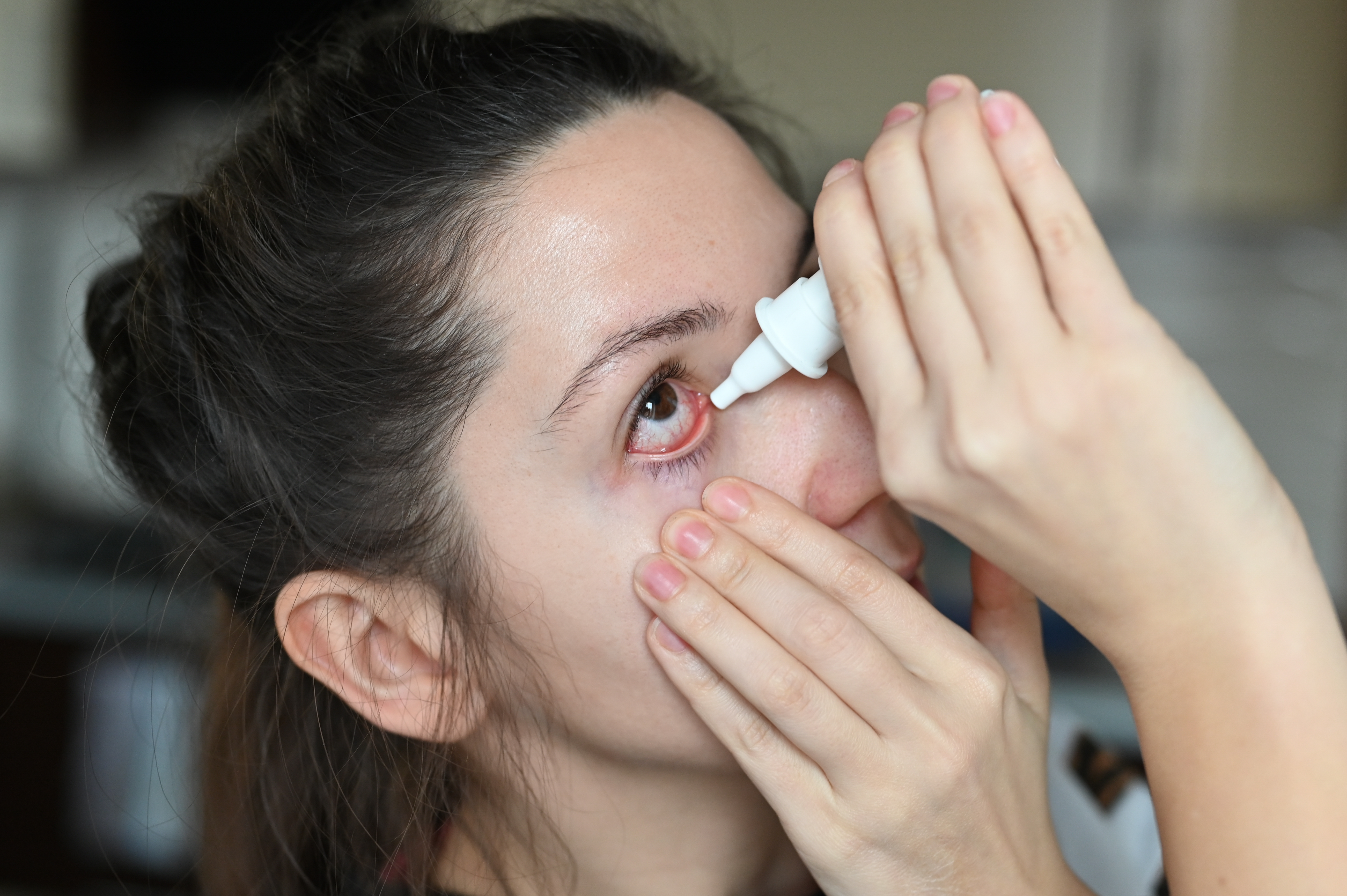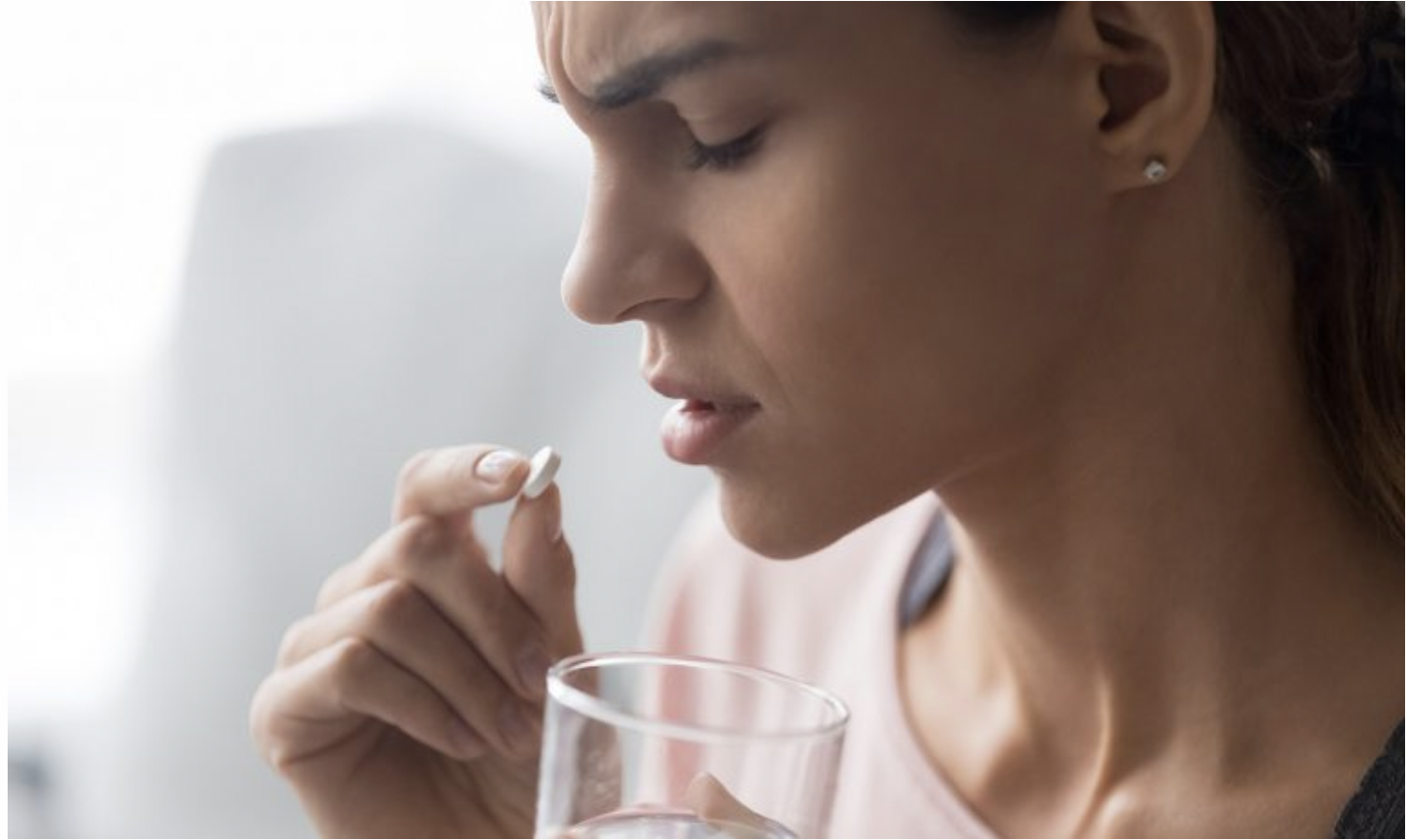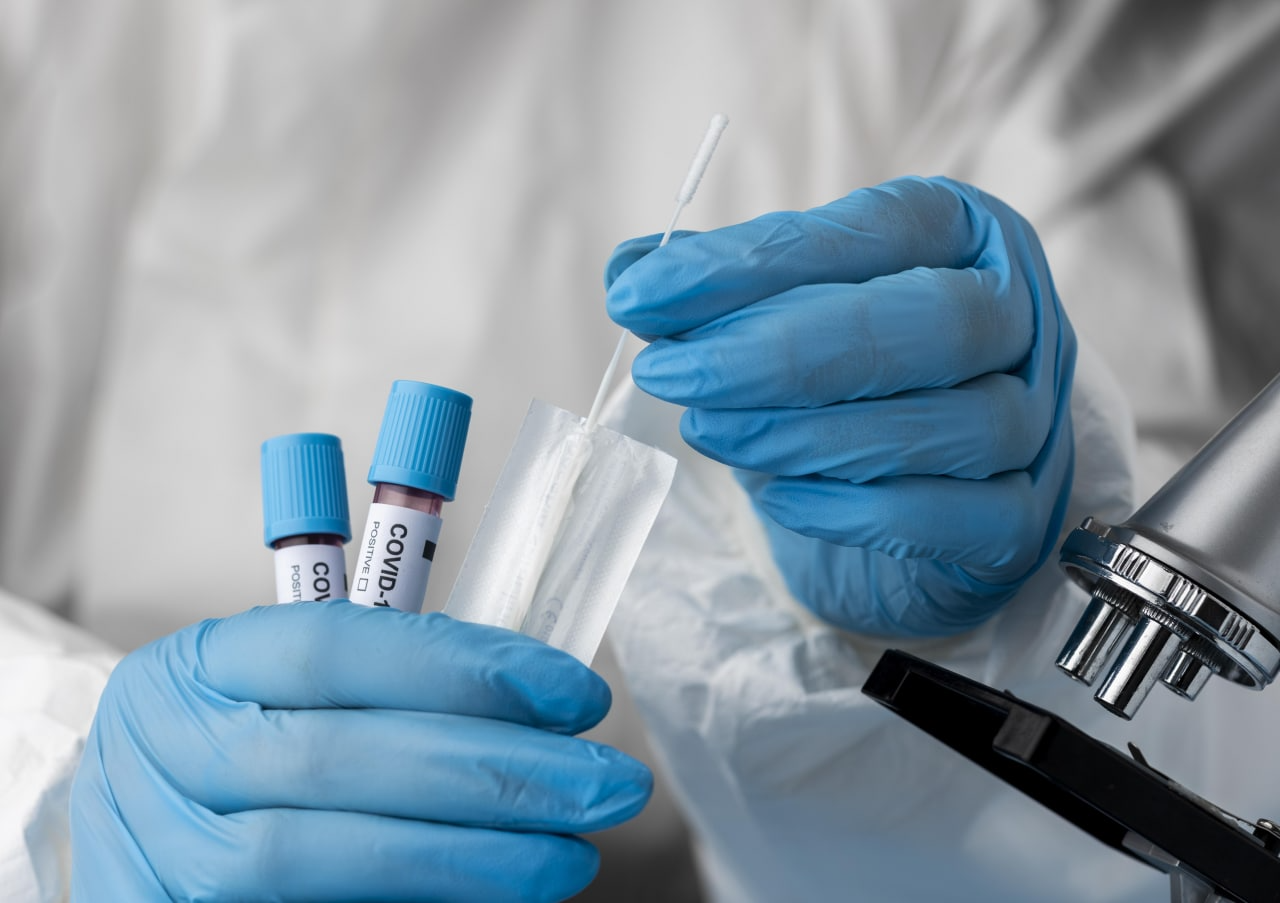Published by: Diana Luai Awad, Dr Pharmacist on Thursday 20. October 2022
Allergic conjunctivitis occurs in 15–40% of the population1 and is accompanied by redness, itching, burning, and watery eyes that require medical management. Let's consider the drugs that are used to treat allergic conjunctivitis.
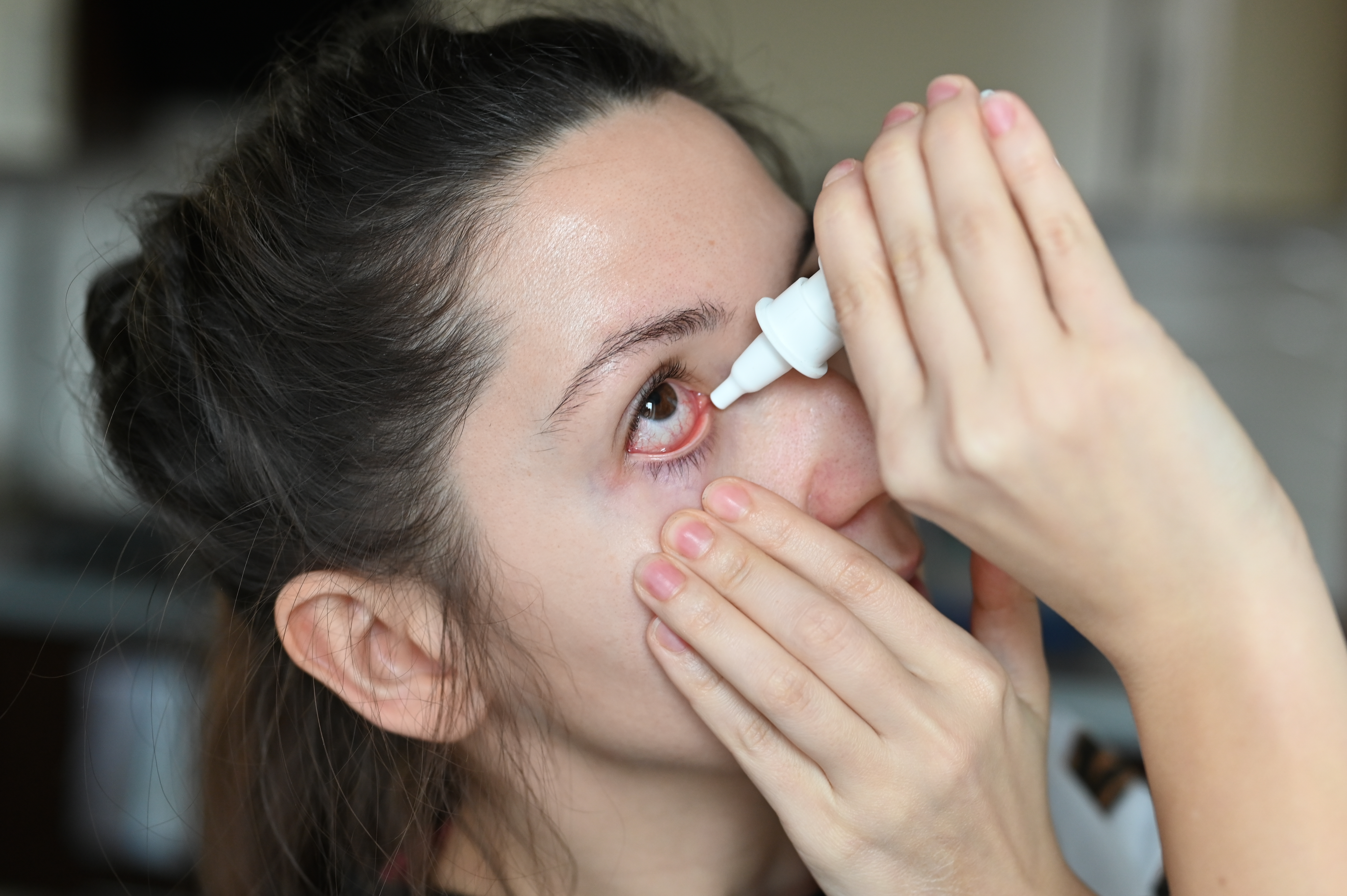
Topical decongestants
Topical decongestants are able to reduce the severity of some symptoms of allergic conjunctivitis due to vasoconstriction through stimulation of alpha-adrenergic receptors. This leads to a reduction in hyperemia, chemosis and redness of the eyes due to the narrowing of the blood vessels. There is also some reduction in itching2.
It should be noted that topical decongestants do not reduce the severity of an allergic reaction, since they do not counteract any of the mediators of allergic inflammation. Their prolonged use, as well as abrupt cancellation, can lead to drug-induced conjunctivitis, which is manifested by a relapse of hyperemia. To minimize this effect, the duration of treatment and/or the frequency of use of local decongestants should be reduced to 4 weeks per year or until another period described in the instructions for use.
Main side effects: rebound effect, contact dermatitis, drug intolerance. Contraindications: angle-closure glaucoma (due to mydriatic effect)1.
Drugs: levocabastine, phenylephrine, tetrahydrozoline, naphazoline hydrochloride.
Topical antihistamines
Antihistamines drugs work by inhibiting the release of histamine from mast cells. They act as selective histamine H1-receptor antagonists, inhibiting the immediate type 1 hypersensitivity reaction, including inhibition of the action of histamine on human conjunctival epithelial cells. In addition, some antihistamines may exhibit anti-inflammatory effects due to the prevention of the late phase of the allergic reaction1.
Since topical antihistamines are applied directly to the conjunctiva of the eye, they show a local effect directly in the site of allergic inflammation, causing faster relief of symptoms of allergic conjunctivitis compared to systemic drugs3.
Main side effects: local irritation, increased sensitivity, in some cases - exacerbation of allergic reactions1. First-generation antihistamines (such as diphenhydramine) can nonspecifically bind to muscarinic receptors, that leads to side effects such as mydriasis, ciliary muscle palsy, photophobia and angle-closure glaucoma, and dryness of the mucous membrane of the eye4.
Drugs: diphenhydramine hydrochloride, mepyramine, olopatadine, azelastine.
Mast cell stabilizers
Drugs of this group stabilize the membranes of sensitized mast cells, inhibit the entry of calcium ions, degranulation and release of histamine, bradykinin, leukotrienes, prostaglandins and other biologically active substances from mast cells. Membranе mast cell stabilizers prevent the development of allergic and inflammatory reactions, inhibit eosinophil chemotaxis1.
A characteristic property of this group of drugs is the ability to block receptors specific for inflammatory mediators. Mast cell stabilizers prevent both the early and late phase of the allergic response by reducing flushing, itching and irritation.
Ophthalmic forms of mast cell membrane stabilizers are used in acute and chronic allergic conjunctivitis, allergic keratitis, keratoconjunctivitis, irritation of the mucous membrane of the eyes caused by allergic reactions, including environmental factors, occupational hazards, household chemicals, cosmetics, ophthalmic dosage forms, plants and pets.
The most powerful effect is achieved with the use of mast cell stabilizers before the onset of symptoms of allergic conjunctivitis, so it is advisable to use them prophylactically, although patients may notice some relief within 24-48 hours after the use of the drug5.
Main side effects: The drugs are well tolerated and show minimal adverse reactions, in particular burning and discomfort during use5.
Drugs: sodium cromoglin, lodoxamide, ketotifen.
Mast cell membrane stabilizers/antihistamines
The drugs of this group are able to simultaneously inhibit mast cell degranulation and competitively bind to the H1-receptor, blocking the binding of histamine. Unlike mast cell membrane stabilizers, they are effective in a short time, usually within minutes after application. The preparations of this class today are one of the most popular means for the treatment of allergic conjunctivitis1.
Main side effects: burning sensation when used, headache, sedation, irritability, dizziness, impaired coordination.
Drugs: olopatadine, azelastine, epinastin, bepotastine.
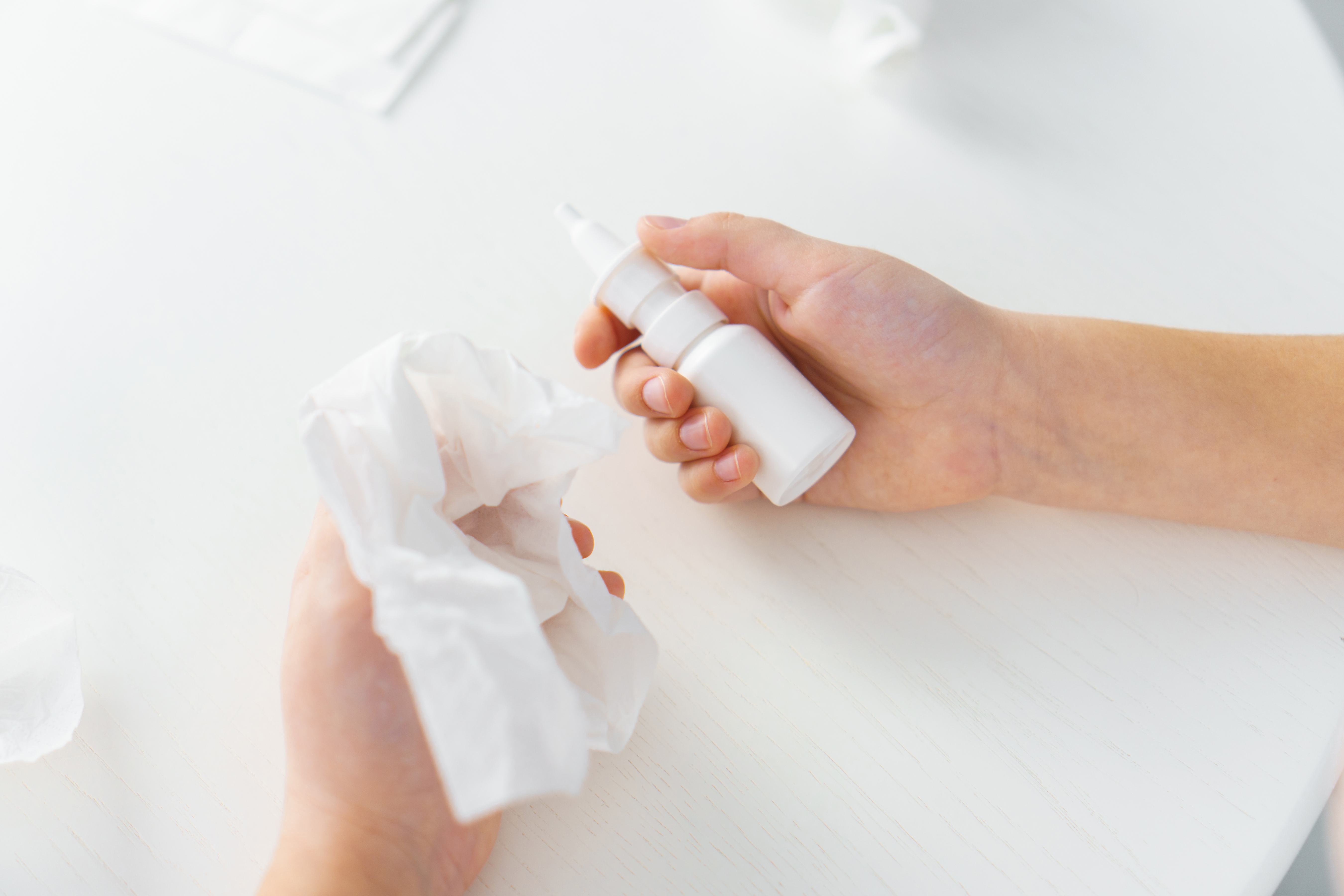
Non-steroidal anti-inflammatory drugs
Non-steroidal anti-inflammatory drugs (NSAIDs) block the enzyme cyclooxygenase and the formation of prostaglandins and arachidonic acid. Due to this, NSAIDs reduce mucus secretion, reduce cellular infiltration, erythema and chemosis, which leads to relief of itching and other symptoms of allergic conjunctivitis, although conjunctival hyperemia, inflammation may persist4.
Main side effects: discomfort and burning during use, cataract formation, increased intraocular pressure, glaucoma, slowing down of reparative processes4.
Drugs: ketorolac, diclofenac, nevanak.
Corticosteroids
Glucocorticosteroids are the most effective drugs for the treatment of allergic conjunctivitis, which can stop all the symptoms of the disease6. Сorticosteroids bind to glucocorticoid receptors and reduce allergic inflammation by altering the circulation and migration of pro-inflammatory cells and modifying their function. The drugs of this group have a fast and powerful anti-inflammatory effect and provide relief from a wide range of symptoms. However, due to adverse reactions, in particular ophthalmic, they are not widely used1. Most current guidelines suggest using topical corticosteroids only for severe allergic conjunctivitis that cannot be controlled by other treatments, and in pulsed mode for as short a time as possible1. It should be noted that the tolerability of topical corticosteroids depends on a number of factors, including the structure, dose, and duration of treatment.
Main side effects: with an increase in the dose of the drug, systemic adverse reactions may occur, in particular, cardiovascular, metabolic effects; ophthalmic reactions – increased intraocular pressure, glaucoma, cataracts, slowing down reparative processes1.
Drugs: prednisolone, fluorometholone, dexamethasone.
|
Pharmacological group |
Drug |
Main indications |
Dosage |
|
Topical decongestants
|
levocabastine |
allergic conjunctivitis |
adults and children over 12 years old, 1 drop in each eye 2 times a day (if necessary - 3-4 times a day). If there is no effect within 3 days, treatment should be discontinued. The maximum duration of therapy is 4 weeks per year. |
|
phenylephrine |
iridocyclitis, red eye syndrome |
1 drop is instilled into the conjunctival sac 2-3 times a day |
|
|
naphazoline |
chronic conjunctivitis |
1-2 drops of a 0.05% solution into the conjunctival cavity, 1-3 times a day. |
|
|
Topical antihistamines
|
diphenhydramine |
acute iridocyclitis, allergic conjunctivitis, |
for instillation into the conjunctival sac use 0.2-0.5% solutions (preferably in a 2% solution of boric acid) and instill 1-2 drops 2-5 times a day |
|
olopatadine* |
allergic conjunctivitis |
1 drop in each eye with conjunctivitis 2 times a day with an interval of 6-8 hours |
|
|
azelastine* |
allergic conjunctivitis |
1 drop in each eye in the morning and evening until the symptoms of the disease disappear. If necessary, the dose is increased up to 4 times a day, one drop in each eye. |
|
|
Mast cell stabilizers
|
sodium cromoglin |
acute and chronic allergic conjunctivitis, allergic keratitis, keratoconjunctivitis, dry eye syndrome, eye strain and fatigue, irritation of the mucous membrane of the eyes due to allergic reactions |
adults and children - 1-2 drops 4 times a day (up to 6-8 times) at regular intervals (when the effect is achieved, the intervals between applications are gradually lengthened) |
|
lodoxamide |
allergic eye diseases: keratoconjunctivitis, papillary conjunctivitis, spring keratitis; allergic ophthalmic reactions caused by wearing contact lenses. |
adults and children over 2 years old - 1-2 drops in each eye 4 times a day for no more than 3 months |
|
|
ketotifen |
prevention and treatment of allergic conjunctivitis. |
adults and children over 3 years old are instilled 1 drop into the affected eye every 8-12 hours. The course of treatment is at least 6 weeks |
|
|
Mast cell membrane stabilizers/antihistamines |
epinastin |
allergic conjunctivitis |
adults and children over 12 years old 1 drop in each affected eye 2 times a day. The duration of use should not exceed 8 weeks. |
|
Non-steroidal anti-inflammatory drugs
|
diclofenac |
non-infectious conjunctivitis |
1 drop 4-5 times a day |
|
nevanak |
non-infectious conjunctivitis |
1 drop 3 times a day |
|
|
Corticosteroids |
dexamethasone |
conjunctivitis (non-purulent and allergic), keratitis, keratoconjunctivitis (without damage to the epithelium), iritis, iridocyclitis, blepharitis, blepharoconjunctivitis |
in acute conditions - 1-2 drops every 1-2 hours, then - after 4-6 hours; in other cases - 1-2 drops 3-4 times a day; course - from 1-2 days to several weeks (2-5 weeks) depending on the condition |
* also has membrane stabilizing effect
Bibliography
- Bielory B. P., O’Brien T. P., Bielory L. Management of seasonal allergic conjunctivitis: guide to therapy //Acta ophthalmologica. 2012; 90 (5): 399-407.
- Bielory L. Allergic and immunologic disorders of the eye. Part I: immunology of the eye //Journal of allergy and clinical immunology. 2000; 106 (5): 805-816.
- Butrus S., Portela R. Ocular allergy: diagnosis and treatment //Ophthalmology Clinics of North America. 2005; 18 (4): 485-v.
- Bielory L. Update on ocular allergy treatment //Expert opinion on pharmacotherapy. 2002; 3 (5): 541-553.
- Bielory L., Friedlaender M. H. Allergic conjunctivitis //Immunology and allergy clinics of North America. 2008; 28 (1): 43-58.
- Leonardi A. The central role of conjunctival mast cells in the pathogenesis of ocular allergy //Current allergy and asthma reports. 2002; 2 (4): 325-331.
Colleagues, haven't you joined our PharmaCourses of MENA region Telegram chats yet?
In the chats of more than 6,000 participants, you can always discuss breaking news and difficult situations in a pharmacy or clinic with your colleagues. Places in the chats are limited, hurry up to get there.
Telegram chat for pharmacists of MENA region: https://t.me/joinchat/V1F38sTkrGnz8qHe
Telegram chat fo physicians of MENA region: https://t.me/joinchat/v_RlWGJw7LBhNGY0

